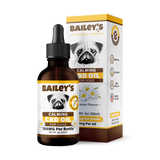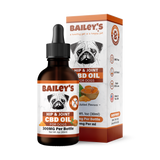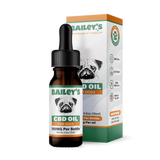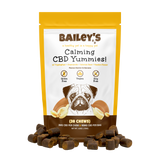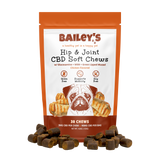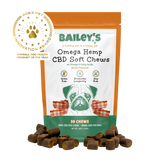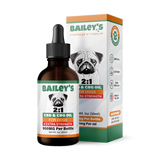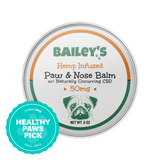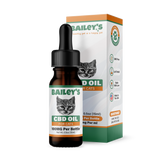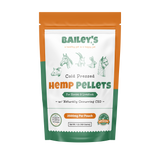How to Use CBD Dog Treats to Train Your Dog
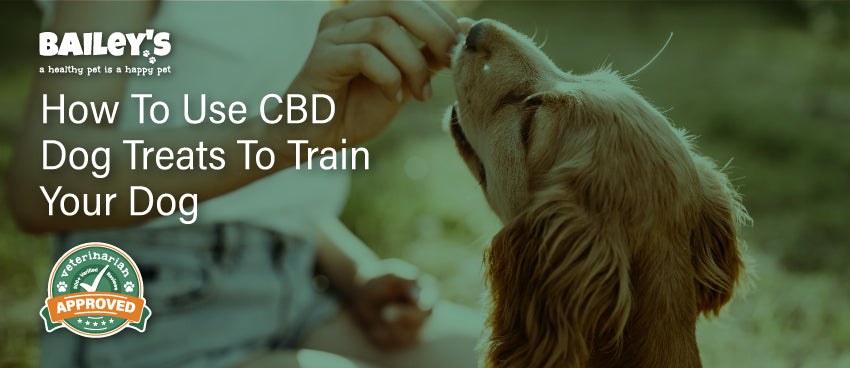
Of the 54 percent of American households that own dogs, about half say they train their dogs themselves. Training your dog can be a wonderful bonding experience and excellent enrichment for your canine pal. Treats can make the training experience easier and more successful for both you and your dog.
CBD dog treats can be a fantastic tool when you’re working with your dog to learn new behaviors. Read on to learn more about these treats and how you can use them in your dog training sessions.
Table of Contents
- 1. What Is CBD
- 2. Is CBD Safe for Dogs
- 3. How To Give CBD Safetly
- 4. What CBD Helps With
- 5. Benefits of Using Treats for Training
- 6. Keep Calories (and Dosing) in Mind
- 7. Find Your Dog's Favorite Treat
- 8. Learn the Treat Value Scale
- 9. Tuck Treats Away
- 10. Keep Sessions (and Treats) Short
- 11. Focus on Baby Steps
- 12. Show Your Dog the Treat
- 13. Hand Feed the Treat
- 14. Transition to Hand Cues
- 15. Find the Best CBD Dog Treats
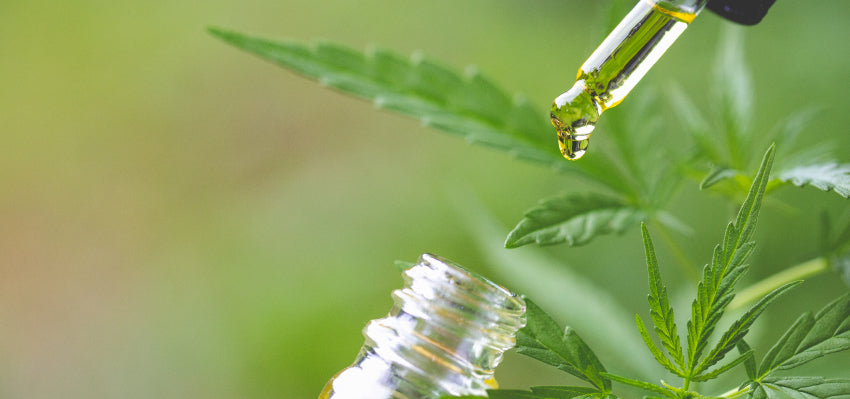
1. What is CBD?
Before we dive into how to use CBD treats in dog training, let’s talk about what CBD is. Cannabidiol, better known as CBD, is one of the compounds that makes up the cannabis plant. CBD is most often harvested as an oil and, unlike marijuana, is legal throughout the United States.
It’s important to note that CBD will not get you high – the cannabis compound responsible for that is tetrahydrocannabinol, or THC. When CBD oil is harvested the right way, it does not contain any THC. This is also why CBD is legal in the United States and why it’s safe to give to your dog.
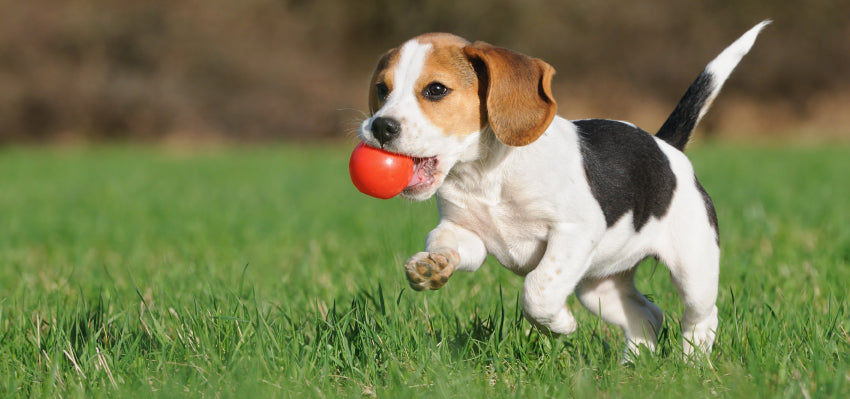
2. Is CBD Safe For Dogs?
Of course, the first thing any good dog owner will want to know is if CBD is safe to give to their dogs. You may know that THC can be extraordinarily dangerous for dogs and can even be lethal in high enough doses. This is part of the reason it’s so important to buy CBD from reputable sources – you don’t want to get a product contaminated with THC.
Pure CBD, however, has proven extraordinarily safe for dogs in the right doses. The worst that has been reported so far is some diarrhea if the dosing isn’t correct for the dog. There can also be some changes in your dog’s liver enzyme levels, so be sure to check with your vet, especially if your dog has a history of or is at high risk for liver problems.

3. How To Give CBD Safely
It’s crucial that you talk to your vet before giving your dog CBD, especially if they’re taking other medications. CBD can impact how your dog metabolizes other medications, meaning a drug may not be as effective as it needs to be if they’re getting CBD. Worse yet, CBD can cause other medications to build up in your dog’s body, perhaps even rising to dangerous levels.
When you first start giving your dog CBD, plan to start with the lowest dose and work your way up from there. In general, experts recommend you give 0.1 to 0.2 mg per kilogram of your dog’s weight twice a day. If you aren’t seeing any effect, up the dose a little, and remember that it never hurts to check dosing with your vet.
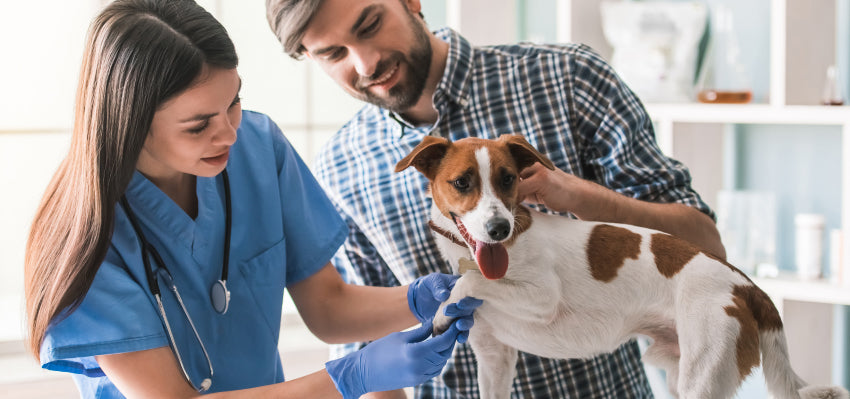
4. What CBD Helps With
Now that we know a little more about CBD use for dogs, let’s talk about some of the things it can help with. Many people give their dogs CBD to help with pain, especially from arthritis. But if you’re wanting to use CBD treats in training, you might be interested to know that CBD can help to reduce aggressive tendencies.
If you’re working on socializing or training a dog with aggression issues, CBD can be a useful tool. CBD helps to reduce dog anxiety, which is often the motivator behind aggressive behavior. Once the dog is more relaxed, you can start building their trust in you and in the world around you, including other dogs and people.
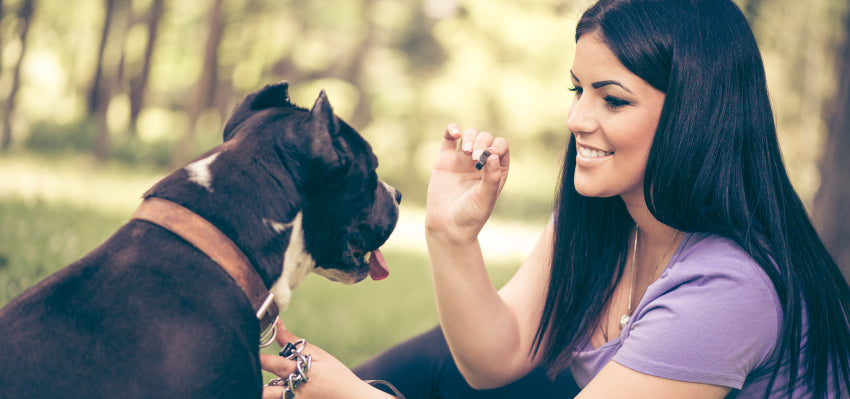
5. Benefits of Using Treats for Training
So why should you use treats to train your dog anyhow? When you’re training a dog, the most important tool you have is positive reinforcement. Whether you’re training them to use the bathroom outside or to shake, you want them to associate that behavior with praise and happiness.
Treats are a fantastic way to give focused rewards that help your dog make the connection between what you’re asking them to do and the desired behavior. Praise is important, too, but your dog may not always associate it with them doing a certain behavior. Treats show them that that behavior is the right response, as well as helping to keep their focus on you.

6. Keep Calories (and Dosing) in Mind
Before you start training with your pup, it’s important to do a little calorie math. During a training session, you may wind up giving your dog anywhere between four and six treats, depending on how well they’re getting the concept and how long you train. This would be the equivalent of you eating half a dozen Oreos every single day.
Take a look at your CBD treats and figure out how many treats you should be giving your dog at a time. Do your best not to exceed that number during training, especially since you have dosing to worry about. Try breaking the treats into smaller pieces to give your dog more frequent rewards, or mix in some non-CBD treats once the CBD ones are gone. We recommend Kono’s treats since they’re small, and only contain freeze dried organ meat.
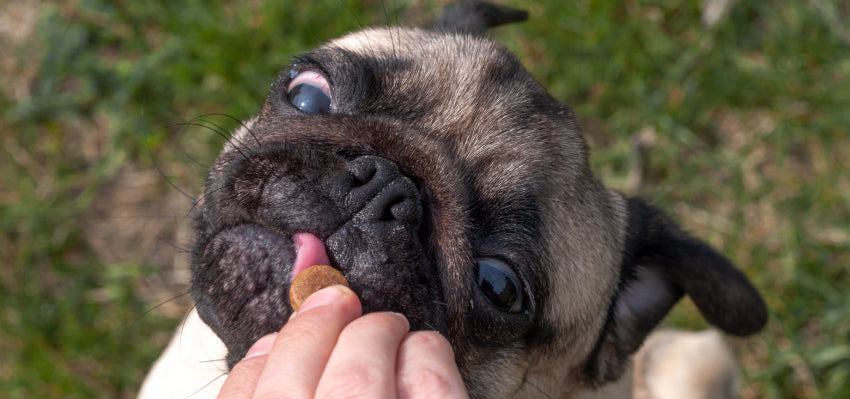
7. Find Your Dog's Favorite Treat
If you want to get the full benefit of training your dog with treats, you need to know what kind of treat they like. You might be more excited about getting cheesecake than cookies, while a friend of yours might get most excited over dumplings or popcorn. Likewise, dogs have different preferences, and knowing what your dog likes will help you to better use those treats during training.
In the weeks before you start formal training, get a variety of CBD treats and flavors. Don’t forget to mix in non-CBD treats, too, such as peanut butter, carrots, small pieces of fish or liver. Give each of these to your dog (not all at once) and pay attention to which ones they seem most enthusiastic about.
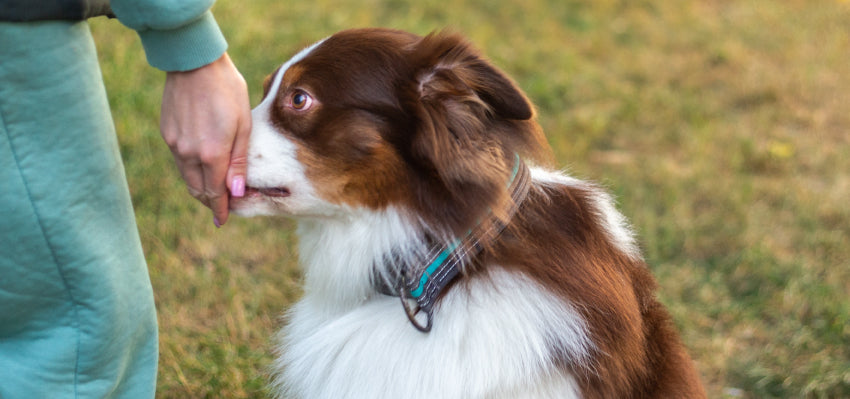
8. Learn the Treat Value Scale
As you start learning your dog’s preferences, you’ll need to make a treat value scale for your dog. You need to know their particular high-, medium-, and low-value treats so you can use each appropriately in training.
High-value treats may include fish or liver, as well as peanut butter and some special favorite dog treats. It’s a good idea to use these when you introduce a new behavior for the first time, when they start to get anxious or aggressive, or when you need some special focus from your dog.
Medium-value treats may include CBD chews and other specially formulated dog treats, as well as foods like carrots. These treats are good for reinforcing a behavior your dog has already learned or throughout the day when they behave well.
Low-value treats are usually dry and crunchy and may, in fact, just be some of your dog’s normal food. These treats can be useful when you’re working to fade out treats with a certain behavior or when your dog doesn’t give their best performance on the behavior.
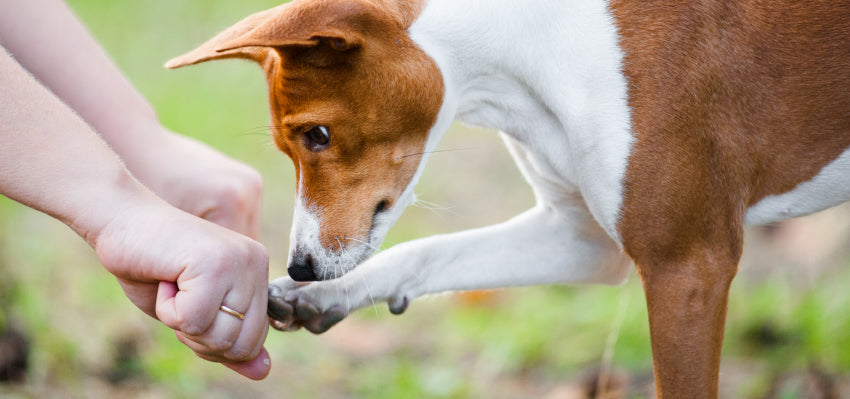
9. Tuck Treats Away
When you get ready to start training, it’s a good idea to keep your dog’s treats in a small, opaque bag, pouch, or pocket. Remember, your goal is to use the treat as a tool to get your dog to focus on you. If you’re holding a handful of their favorite foods in the world, they’re going to be much more focused on the treats than on you.
Portion the treats out into appropriately sized pieces, and put them in your pocket or in a small pouch at your waist. You can take out one treat at a time to get your dog’s attention or when it’s time to reward their behavior. During the rest of the training session, try to keep your hands away from the treats so you don’t distract your dog.

10. Keep Sessions (and Treats) Short
If your dog seems to be doing well with training, it can be tempting to just keep going until all the treats are gone. But it’s important to keep in mind that, while dogs can be very intelligent, they still have a limited attention span. Trying to cram in too much at once can overwhelm them and leave them confused about what you want from them.
Keep your training sessions short, preferably under five minutes each, especially for young puppies. Try to focus on one behavior per training session, especially while they’re still learning the trick. Once they’ve mastered the behavior, you can use some training sessions as a quick “review” of the tricks they already know.

11. Focus on Baby Steps
When you’re teaching a new behavior, you might think you should try to get your dog to do it all at once. But keep in mind that learning new behaviors is a puzzle for your dog. They have to figure out what you want them to do and then learn to associate the command or signal you’re giving them with that behavior.
Break down each trick into a series of smaller steps that you use to build to the larger trick. For instance, if you want to teach your dog to roll over, start by teaching them to sit and then to lay down. From there, teach them to lay down and then roll onto their side, and then onto their back, and then all the way over.
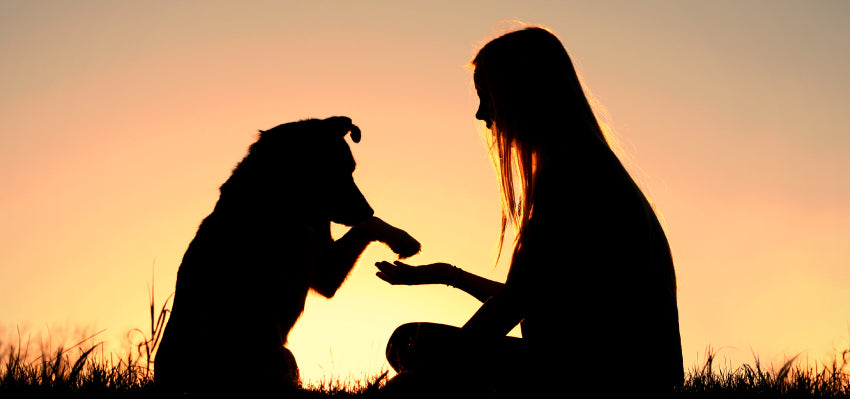
12. Show Your Dog the Treat
As you’re working with your dog, you want to make sure you’re keeping their full attention. And while your dog can certainly smell the treat in your hand, they can also smell the treats in your bag and the food in your kitchen and the person who just walked down your street. This can get confusing for them, and they may not zero in on the particular treat you’re holding.
Make sure that you always hold treats where your dog can see them, preferably pinching the treat between your thumb and forefinger and curling the rest of your fingers into your palm. This allows your dog to see the treat and will hold their attention on it instead of everything else they smell. This can be especially helpful when you’re trying to guide them to do something, such as sitting or moving to a certain spot.

13. Hand Feed the Treat
Once your dog does what you want, and it’s time to give them the treat, you may be tempted to drop it on the ground for them. But this means that your dog will learn that the ground is where the treat will go when they finally get to have it. They’ll start staring at the ground, waiting for the treat, instead of keeping their focus on you.
Instead, hand feed your dog the treat when it comes time to do so. If your dog has a tendency to snatch the treat, catching your fingers in the process, lay the treat in your open palm and feed it to them with a flat hand. This will keep you from getting nipped until you can teach them to be gentle in taking their treat.
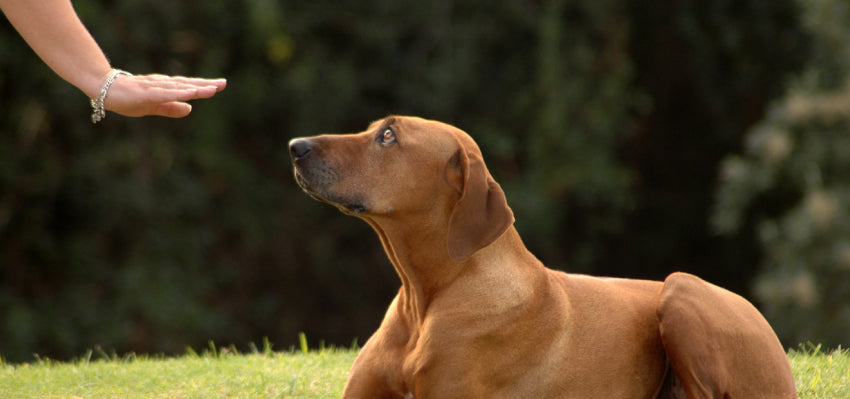
14. Transition to Hand Cues
As your dog starts to get the hang of certain behaviors, you’re going to want to start slowly transitioning away from using treats as the cue to do the trick. Your dog should still associate doing the trick with positive reinforcement, and plenty of praise is important. But you want them to learn to associate a hand signal with performing the behavior rather than a treat.
Once your dog has a behavior down pat, start using low-value treats to reward the behavior. Instead of holding the treat when you give the command, use a hand signal first and then reach for a treat once your dog has done the behavior. Over time, you can phase out the treats entirely, so your dog is responding only to the hand signal.

15. Find the Best CBD Dog Treats
CBD dog treats can be a helpful tool when training your dog, especially if they struggle with anxiety or aggression. Remember to always talk to your vet before giving your dog CBD, especially if they’re taking other medications. Keep training sessions short, treats small, and behaviors simple so your dog can learn in a positive, stress-free environment.
If you’d like to find the best CBD dog treats, check out the rest of our site at Bailey’s. We believe a healthy pet is a happy pet, and we offer the products you need to keep your dog thriving. Shop our calming dog collection and start getting the peace of mind you need for your pooch.

